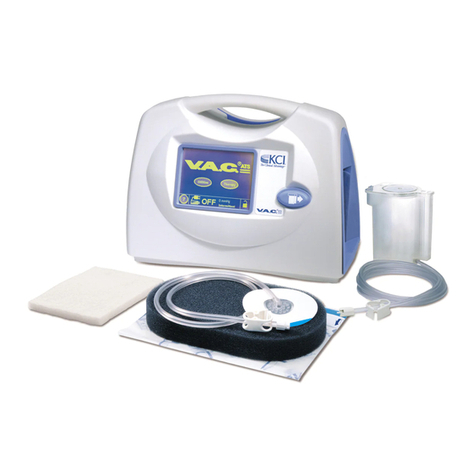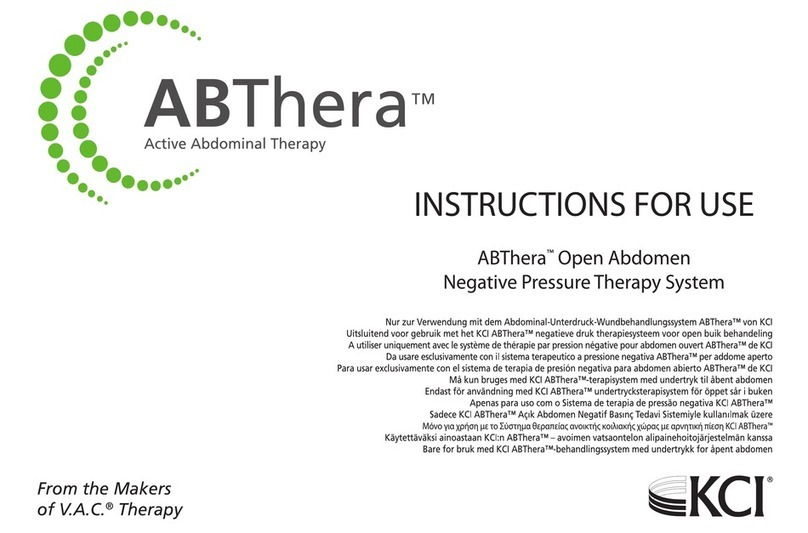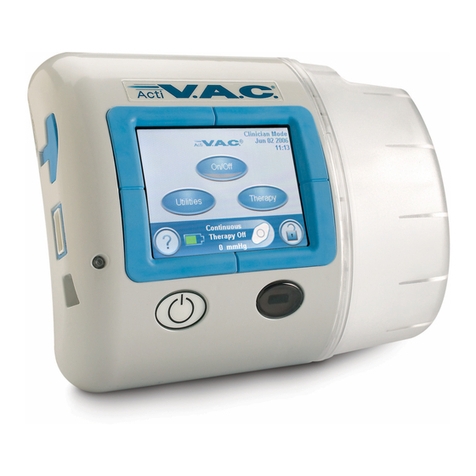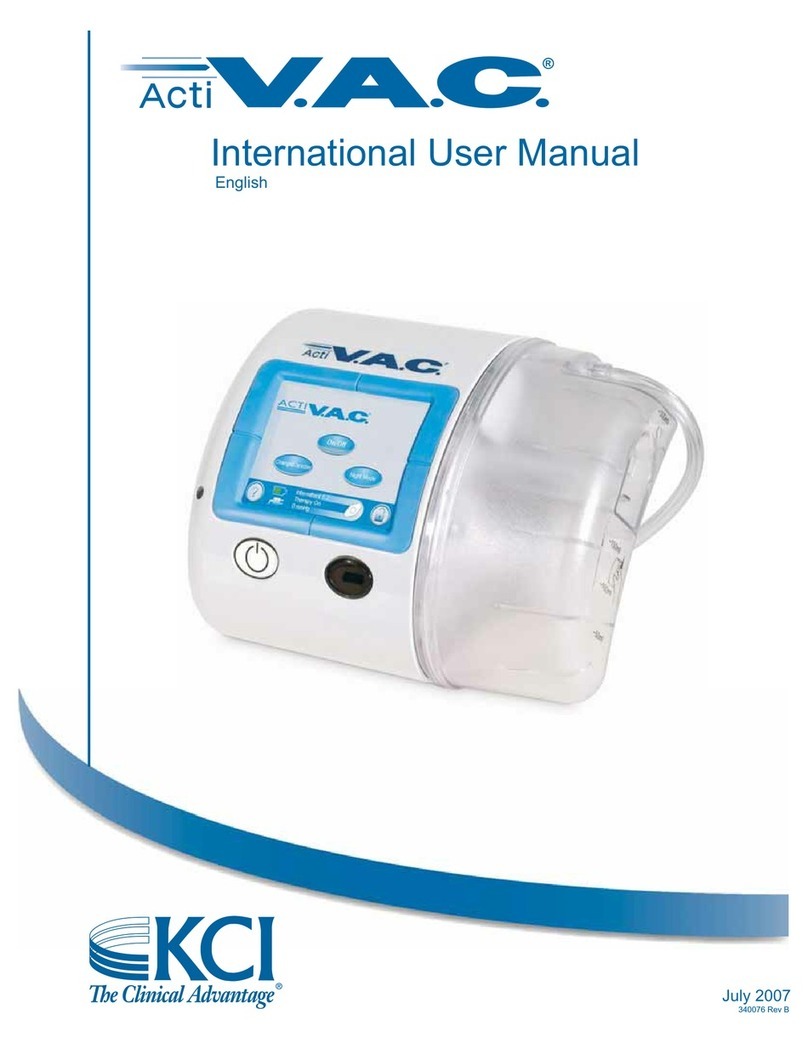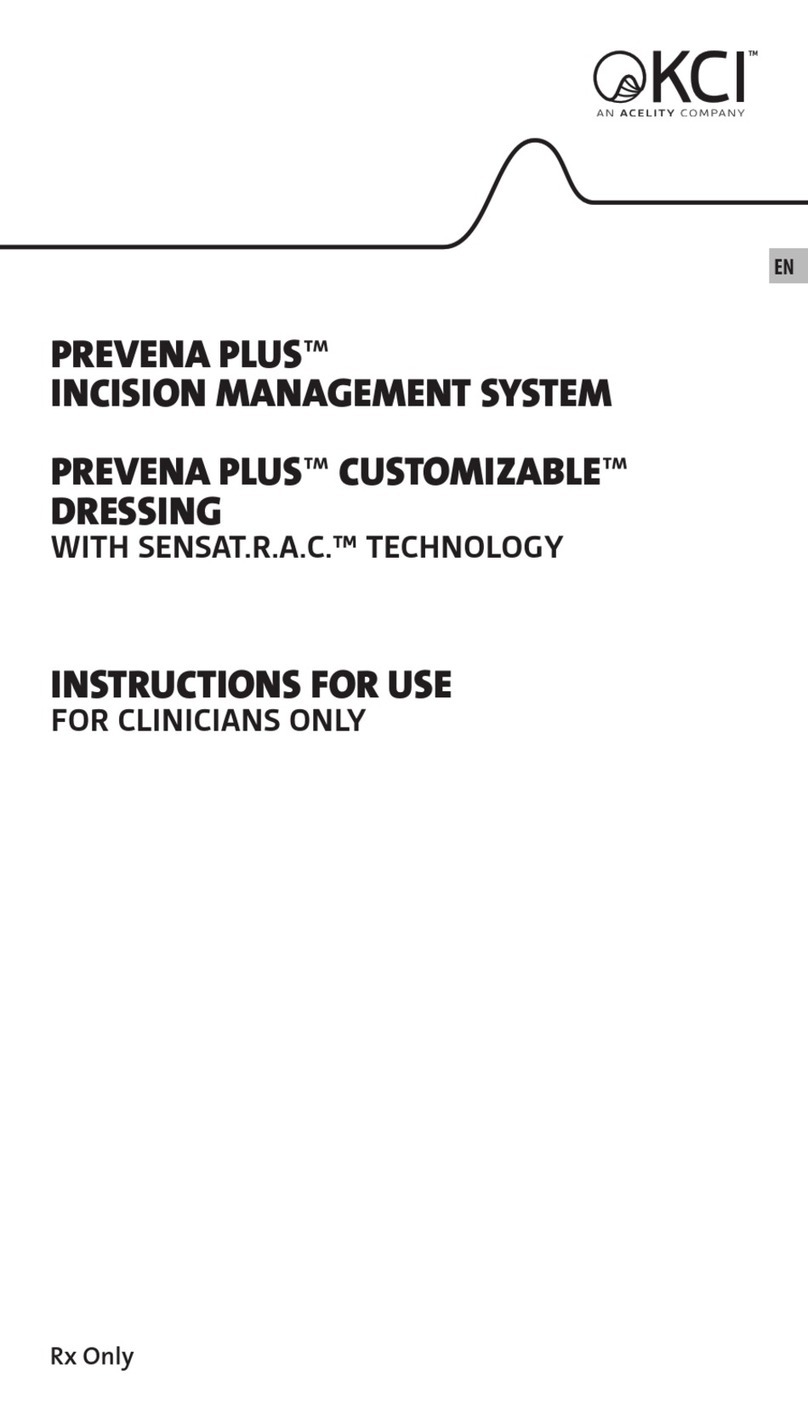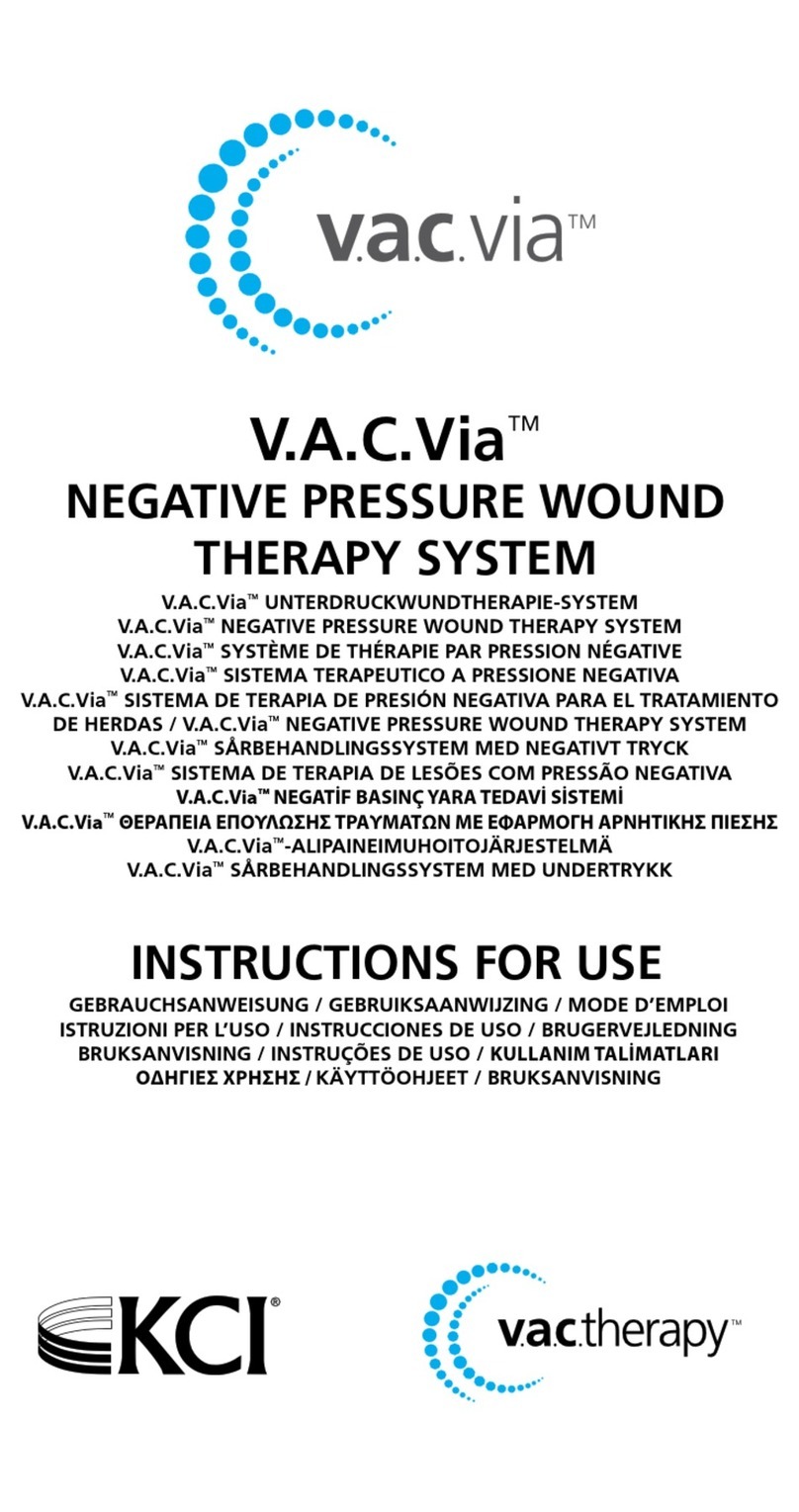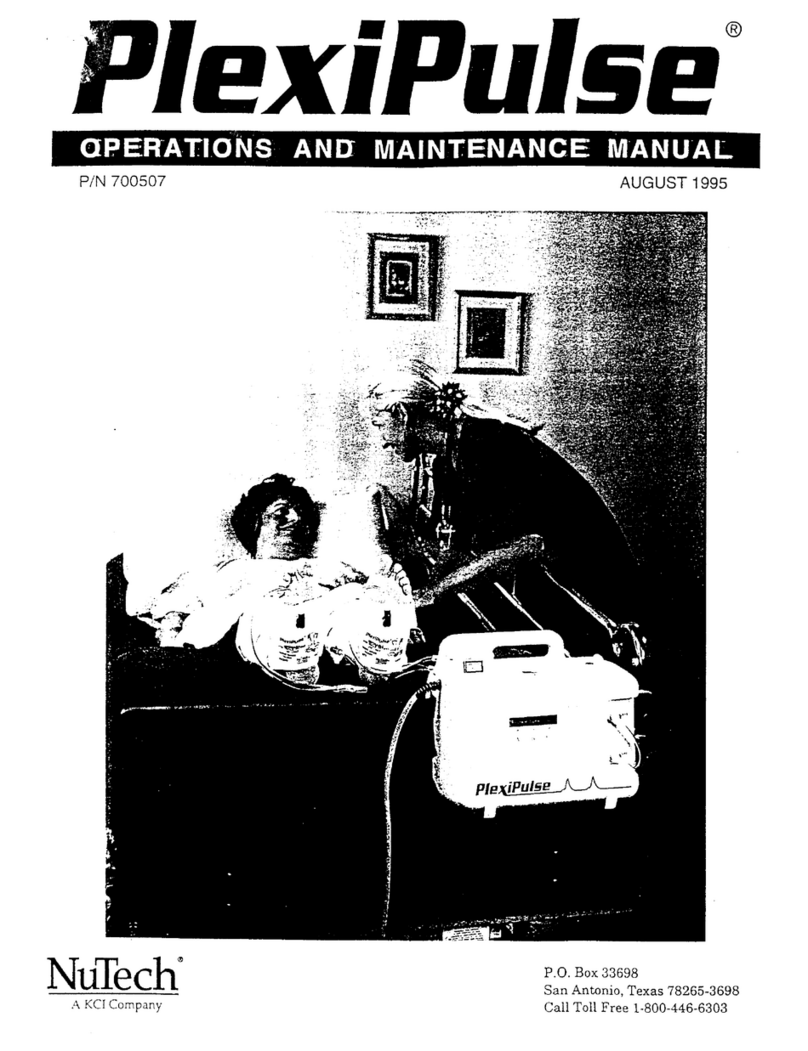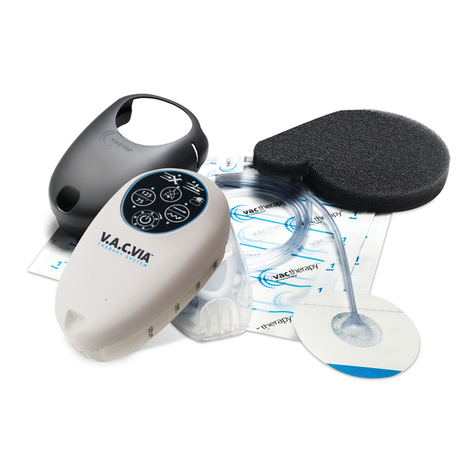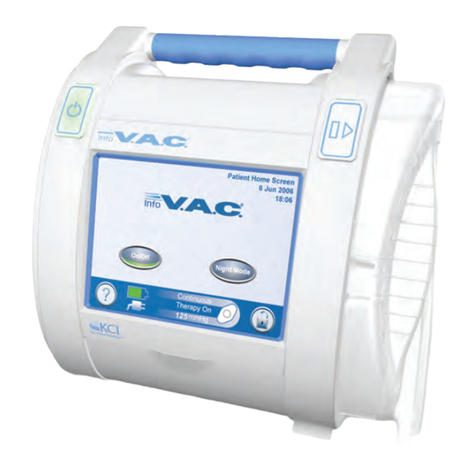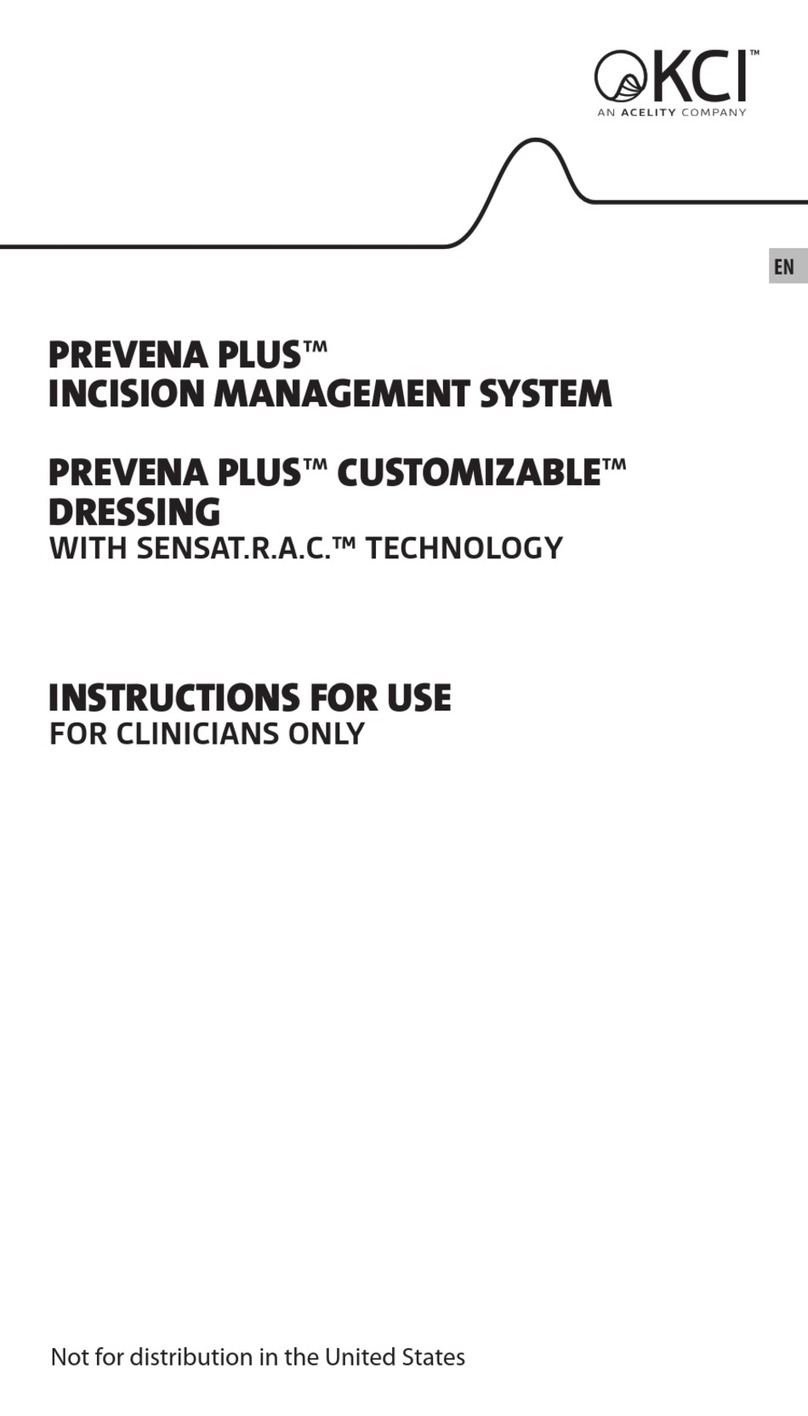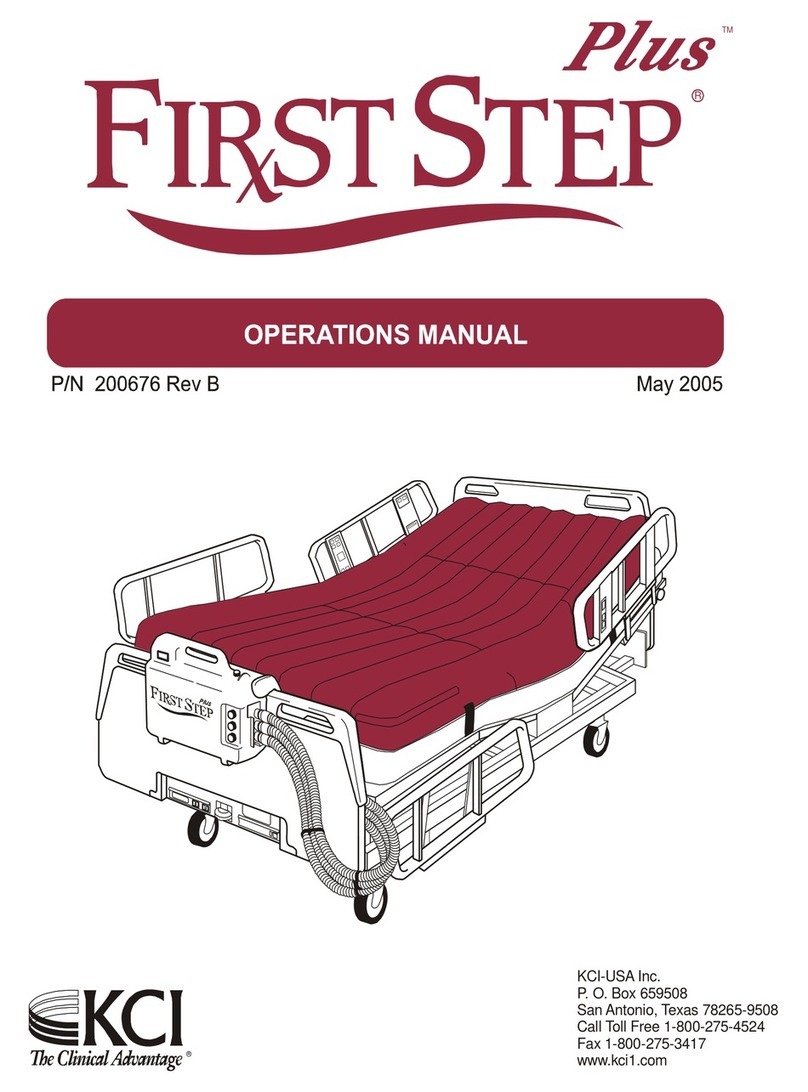
8
Infected Wounds: Infected wounds should be monitored closely and may require more frequent
dressing changes than non-infected wounds, dependent upon factors such as wound conditions,
treatment goals and instillation therapy parameters (for the V.A.C. Instill® Therapy System). Refer to
dressing application instructions (found in V.A.C.® Dressing cartons) for details regarding dressing change
frequency. As with any wound treatment, clinicians and patients / caregivers should frequently monitor
the patient’s wound, periwound tissue and exudate for signs of infection, worsening infection or other
complications. Some signs of infection are fever, tenderness, redness, swelling, itching, rash, increased
warmth in the wound or periwound area, purulent discharge or strong odor. Infection can be serious,
and can lead to complications such as pain, discomfort, fever, gangrene, toxic shock, septic shock and / or
fatal injury. Some signs or complications of systemic infection are nausea, vomiting, diarrhea, headache,
dizziness, fainting, sore throat with swelling of the mucus membranes, disorientation, high fever,
refractory and / or orthostatic hypotension or erythroderma (a sunburn-like rash). If there are any signs
of the onset of systemic infection or advancing infection at the wound site, contact the treating
physician immediately to determine if V.A.C.® Therapy should be discontinued. For wound
infections relating to blood vessels, please also refer to the section titled Infected Blood Vessels.
Osteomyelitis: V.A.C.® Therapy should NOT be initiated on a wound with untreated osteomyelitis.
Consideration should be given to thorough debridement of all necrotic, non-viable tissue, including
infected bone (if necessary) and appropriate antibiotic therapy. Protect intact bone with a single layer of
non-adherent material.
Protect Tendons, Ligaments and Nerves: Tendons, ligaments and nerves should be protected to
avoid direct contact with V.A.C.® Foam Dressings. These structures may be covered with natural tissue,
meshed non-adherent material or bio-engineered tissue to help minimize risk of desiccation or injury.
Foam Placement: Always use V.A.C.® Dressings from sterile packages that have not been opened
or damaged. Do not place any foam dressing into blind / unexplored tunnels. The V.A.C.® WhiteFoam
Dressing may be more appropriate for use with explored tunnels. Do not force foam dressings into any
area of the wound, as this may damage tissue, alter the delivery of negative pressure or hinder exudate
and foam removal. Always count the total number of pieces of foam used in the wound. Document the
foam quantity and dressing change date on the drape or Foam Quantity Label if available, and in the
patient’s chart.
V.A.C.® Foam Dressings are radiolucent, not detectable on X-Ray.
Foam Removal: V.A.C.® Foam Dressings are not bioabsorbable. Always count the total number of pieces
of foam removed from the wound and ensure the same number of foam pieces are removed as were
placed. Foam left in the wound for greater than the recommended time period may foster ingrowth
of tissue into the foam, create difficulty in removing foam from the wound or lead to infection or other
adverse events. If dressing adheres to wound consider introducing sterile water or normal saline into
the dressing, waiting 15 - 30 minutes, then gently removing the dressing from the wound. Regardless
of treatment modality, disruption of the new granulation tissue during any dressing change may result
in bleeding at the wound site. Minor bleeding may be observed and considered expected. However,
patients with increased risk of bleeding, as described in the Bleeding section, have a potential for more
serious bleeding from the wound site. As a precautionary step, consider using V.A.C.® WhiteFoam or
non-adherent material underneath the V.A.C.® GranuFoam™ Dressing to help minimize the potential for
bleeding at dressing removal in these patients. If significant bleeding develops, immediately discontinue
the use of the V.A.C.® Therapy System, take measures to stop the bleeding, and do not remove the
foam dressing until the treating physician or surgeon is consulted. Do not resume the use of the V.A.C.®
Therapy System until adequate hemostasis has been achieved and the patient is not at risk for continued
bleeding.
